Roman Chair Exercises – Everything You Need to Know
Author:
Unlock your full potential by engaging with our experts and community! Have questions about your fitness journey or looking for expert advice on weightlifting techniques? Don’t hesitate — leave a comment below and Ihor Shymechko will provide a personalized answer and insights to help you reach your goals.
Torokhtiy is reader-supported. Some links are affiliate links, and we may earn a commission at no extra cost to you. See our disclosure page for details.
Whether your goal is to strengthen your core, build your abs and improve posture, Roman chair exercises are there to help you achieve your goals.
But most people wonder if it’s worth getting one. Roman bench workout is beneficial to practically every part of your body. Many doctors recommend it to tackle back pain, improve posture, balance and recovery from injuries.
In this article, we will cover the definition of Roman chair exercises, how to use Roman chairs and examples of Roman chair exercises to try. We will also uncover muscles the Roman chair works, providing recommendations and answers to frequently asked questions.
Roman chair exercises include side bend, Roman sit-up, incline push-up, back extension, preacher bicep curls, hanging dip, and isometric glute hold. Roman chair exercises target different muscle groups, such as the glutes, hamstrings, chest, biceps, triceps, core, lower back, and abs.
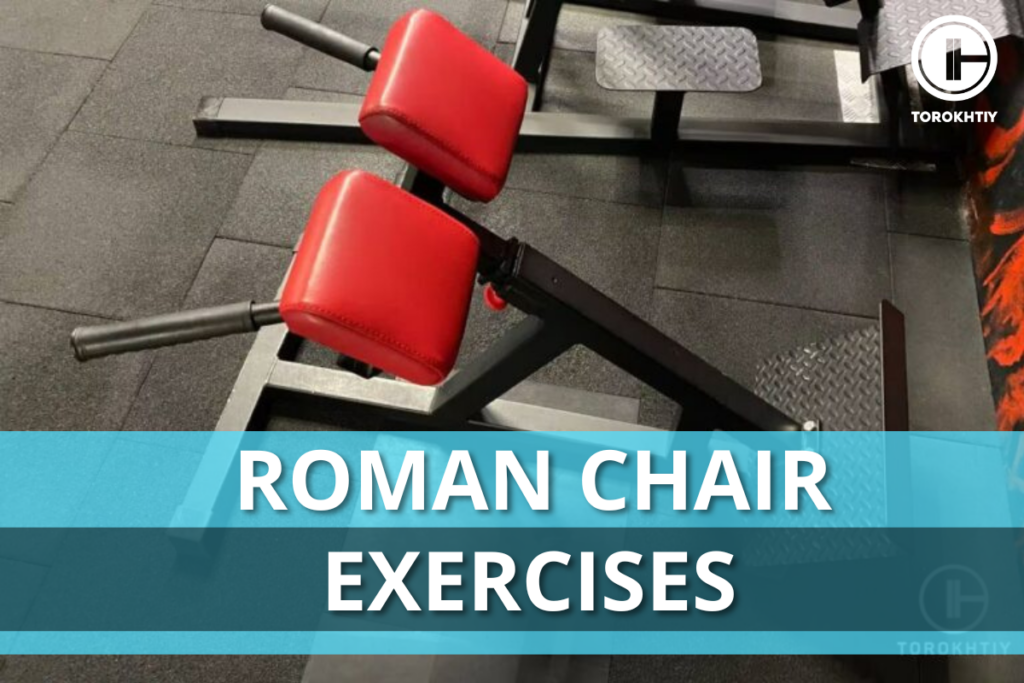
What Are the Roman Chair Exercises?
Roman chair exercises are performed on a multifunctional piece of equipment known as the Roman chair. Roman chair exercises work by utilizing the body’s weight as resistance to strengthen the glutes, back, abs and upper leg.
Roman chairs are usually small and resemble a bench. They mostly have padded seats and foam rollers to allow you to lie down and grip your weight and position during exercises.
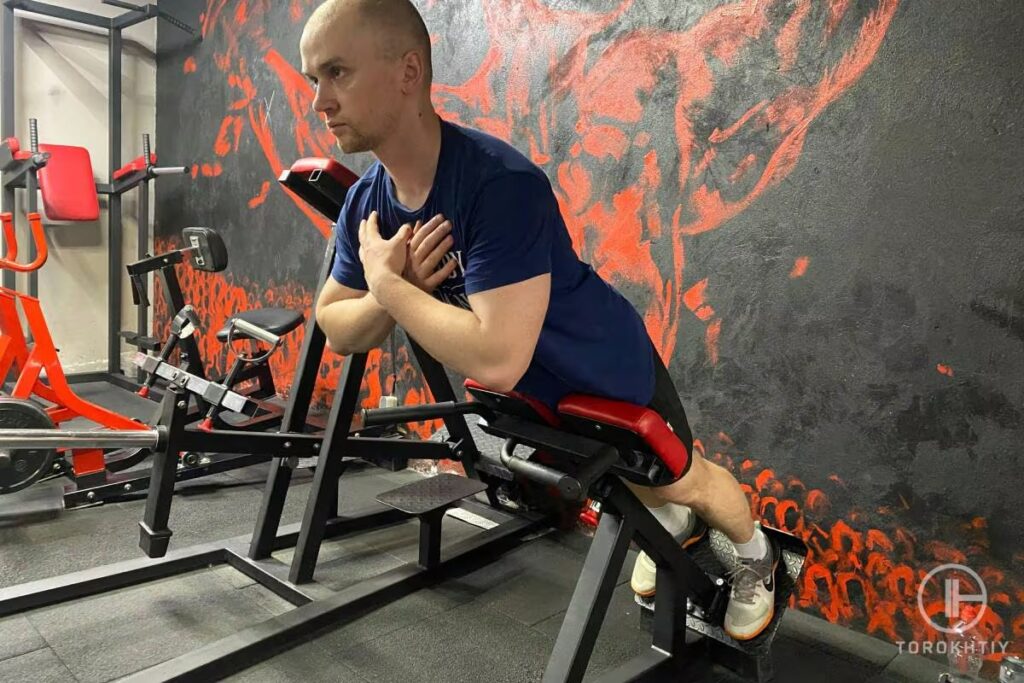
Muscles Worked by the Roman Chair Exercises
Roman chair exercises strengthen the core, glutes, hamstrings, abdominal, abs, and upper and lower muscles. However, different types of Roman chair exercises target different groups of muscles. Some exercises target more than one muscle group simultaneously.
This results in improved flexibility, stability, balance and posture.
1. Lower and Upper Back
When performing back extension or hyperextension exercises on the Roman chair, each repetition activates the erector spinae muscle groups. The erector spinae muscles support, connect, and protect the spinal column and the overall back muscles. This strengthens the lower and upper back muscles.
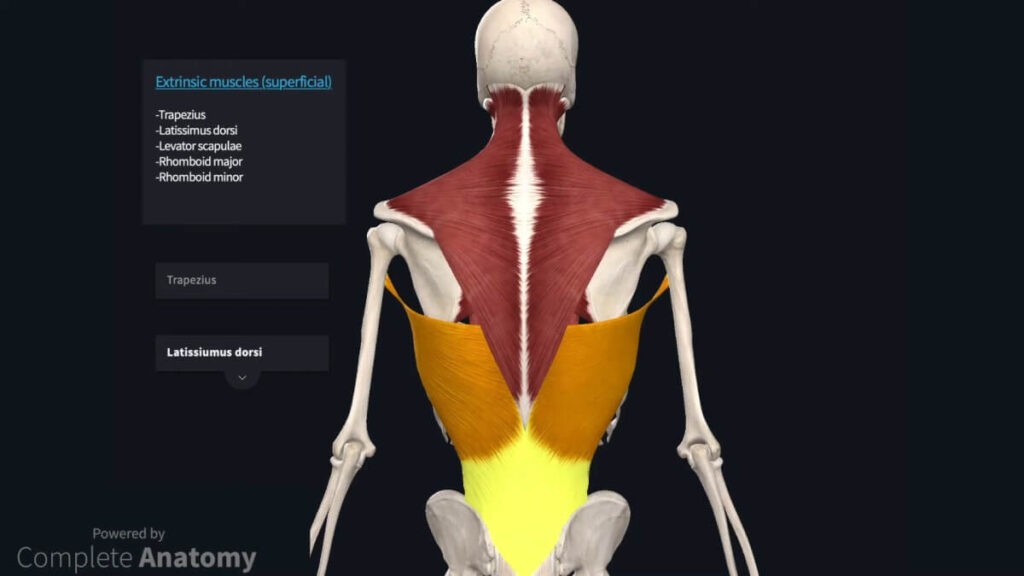
A clinical trial examining the effects of variable-angle Roman chair exercise training on back extension endurance and strength shows that dynamic progressive exercise training may help improve back extension endurance.
2. Core
When performing exercises such as the Roman chair sit up that targets the core, the abs contract and work hard to stabilize your pelvis and spine. This helps to maintain a stable torso position, which in turn, strengthens your core muscles.
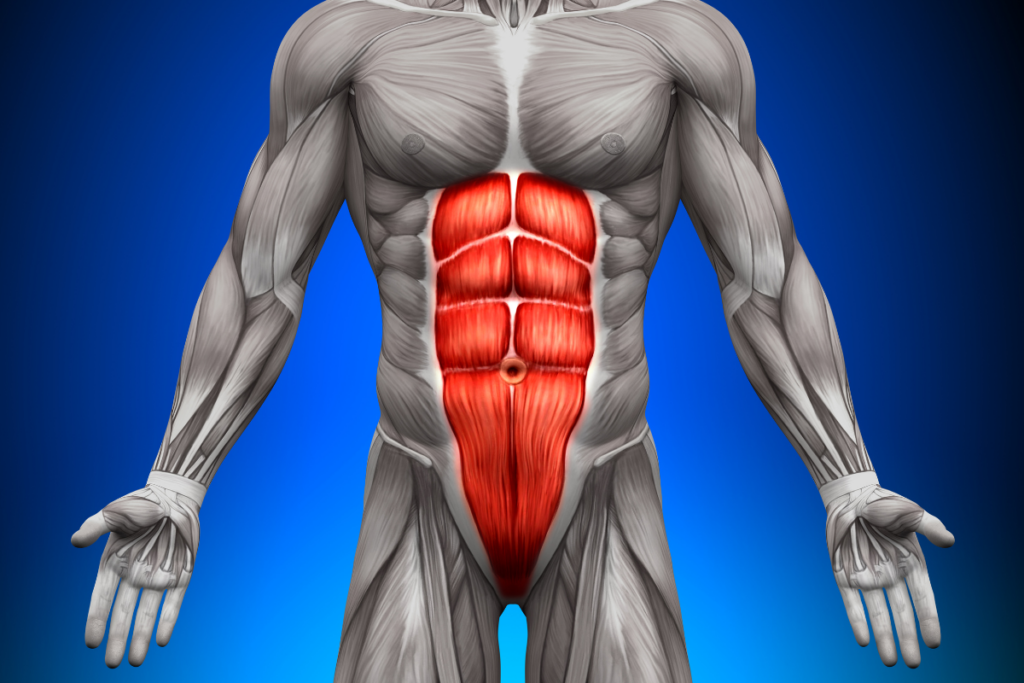
3. Hamstrings
When performing hip extension exercises on the Roman chair, the hip movement component of the hamstring is isolated. Setting the Roman chair up will provide a complete hip range of motion. This builds up and strengthens the hamstring muscles.
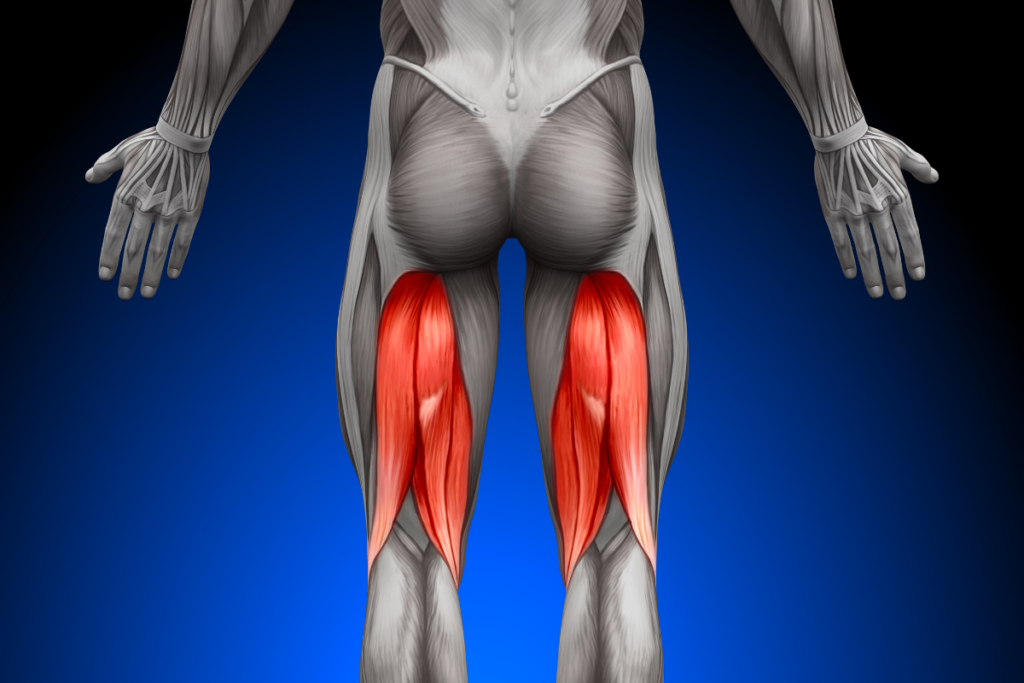
A study investigating the effectiveness of the single-leg Roman chair in improving hamstring strength-endurance compared to the Nordic hamstring curl reveals that single-leg Roman chair is more effective.
4. Glutes
When performing Roman chair exercises for the glutes, your back will be rounded and your feet will be positioned at 45 degrees. This leaves your gluteus muscles in isolation and forces them to work harder, resulting in stronger glutes.
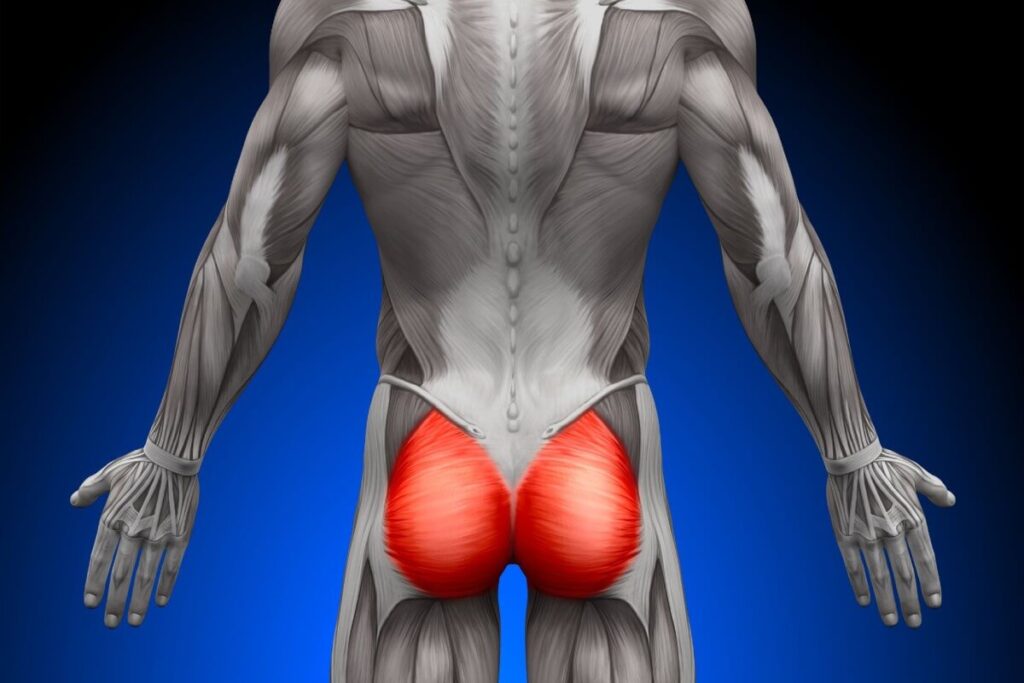
A study analyzing the effect of angle and hand position during Roman chair exercise shows that greater electromyographic activity of the lumbar extensor muscles was observed by adjusting angle and hand position.
7 Roman Chair Exercises to Try
Here are examples of Roman chair exercises to try:
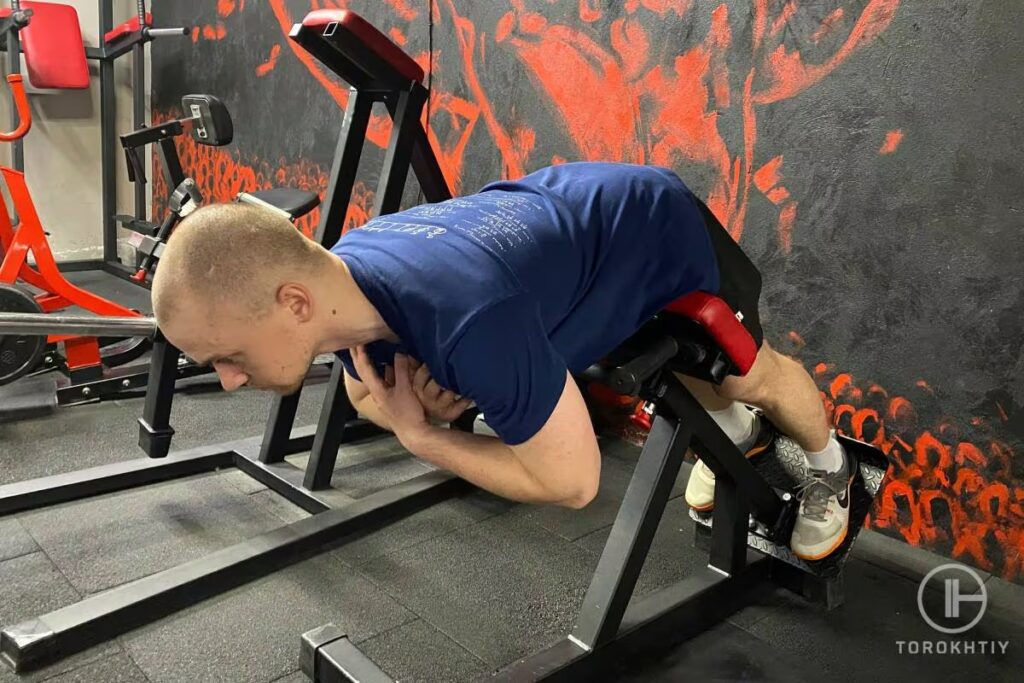
1. Side Bend
Side Bend is a popular exercise performed on a Roman chair. It targets your oblique muscles. The oblique muscles are found along the sides of your abdomen.
Strengthening your oblique muscles will improve your flexibility because the oblique muscles control the movement of the trunk.
Here’s how to perform the side bend exercise:
- Begin by lying on your side and use Roman’s chair leg support to secure your feet.
- Position your hands behind your back or cross them on your chest, and straighten your back.
- Tilt your body towards the floor with your hips.
- Concentrate on your obliques, and pull yourself up to the starting point.
- Turn over to the other side and repeat the procedure.
2. Back Extension
Back Extension is another Roman chair exercise. It targets the glute and lower back muscles.
Roman chair back extension provides a wide range of motion and stimulates your posterior chain muscle fibers. In addition, it works on your lower back muscles and helps develop your erector Spinae. The Erector Spinae muscle group helps keep your back straight.
A study assessing the effect of pelvic stabilization and hip position on trunk extensor activity when performing back extension reveals that the hip at 40 degrees allows the Roman chair to specially train the back muscles.
This exercise can improve your posture and relieve back pain. However, performing the wrong techniques might lead to injuries. Here is how to perform this Roman bench workout:

- Position the Roman chair pad at hip height.
- Lie on your front on the Roman chair and secure your feet with the support.
- Position your hands behind your neck or cross them on your chest.
- Lean slowly towards the floor.
- Raise your torso to the starting position.
- Repeat the procedure.
3. Incline Push-Up
Incline push-up is a variation of the traditional push-up performed on a Roman chair. Unlike the conventional push-up, which relies on your arms and shoulders, you can easily target your lower chest with a Roman chair.
Here’s how to perform it:
- Start by standing behind the chair and holding the handlebars.
- Bend your body until it forms a 45 degrees angle to the floor.
- Slightly bend your elbows and utilize the handlebar in lowering your upper body. until your chest almost comes in contact with the pads on the back of the Roman chair.
- Ensure you position your body in a straight line and do not bend your back.
4. Hanging Dip
Hanging dip is a Roman chair exercise that targets your chest and triceps muscles.
Here are the steps to perform a hanging dip:
- Start by positioning yourself behind the Roman chair and holding the handlebars.
- Go on your knees and bend them.
- Utilize the handlebars and slowly lift yourself from the floor.
- Keep your feet crossed to make the exercise easier.
5. Roman Chair Sit Up
The Roman chair sit up is a variation of the traditional sit-up. Because of the angle of your body and the gravitational force exerted on your abs, it’s more difficult than the traditional sit-up.
This exercise targets your abs, and most experienced athletes perform it to develop their abs.
However, you can add weight to this exercise to intensify your Roman bench workout. It’s always advisable to master this Roman chair abs exercise before adding extra weight.
Here’s how to perform it:
- Begin by sitting on the Roman chair and use the Roman chair roller pads to secure your feet.
- Position your hands on your temple.
- Bring down your body towards the floor and stop below the parallel.
- Raise your torso back to the start.
- Repeat the procedure.
6. Preacher Bicep Curls
The preacher biceps curl is a Roman chair workout that allows you to target your biceps. It’s among the Roman chair exercises that you can incorporate a weight such as a dumbbell. However, it’s advisable to avoid ‘swinging’ your body when performing this exercise on a Roman chair to increase your biceps muscle growth and development.
Here is how to perform the Roman chair preacher bicep curls:
- Locate the preacher curl’s handle, and face it while carrying two dumbbells.
- Position your triceps on the Roman chair’s hip support pad.
- Bring down the dumbbells, stopping when your arms are straight (open up your elbows).
- Curl the dumbbells in the direction of your face and contract your bicep muscles at the top of the motion.
- Lower it slowly and repeat the process.
7. Isometric Glute Hold
Isometric glute hold is among the best Roman chair exercises for glutes. It also engages your core and abs muscles.
Here’s how to perform an isometric glute hold with a Roman chair:
- Begin by adjusting the Roman chair. Lift the ankle pads until they form a line with the groin pad.
- Lie down with your head facing the chair.
- Tuck your feet under Roman’s chair ankle pads.
- Lift your upper body, ensuring your body is straight and parallel to the floor for an extended period (or as long as possible).
- Repeat the procedure.
How to Use a Roman Chair?
Many people find the look of the Roman chair frightening, but it’s pretty easy once you understand the proper way to use it.
Here are the steps to using a Roman chair:
- First, start by lying face down on the bench pad, and tuck your ankles under the roller pads. Ensure the bench is firm, steady and your body is secure before starting any exercise. This helps to prevent unnecessary injuries.
- Second, straighten your body on the bench and ensure it is in line with your legs. Next, cross your arms on your chest, or keep it behind your back (this depends on the nature of your exercise). This position is your starting position.
- Ensure you keep your back straight and move forward slowly at the waist as much as is viable while breathing out. When you reach the furthest point, slowly go up while breathing, completing with your body in a straight line as you begin.

SF-BH6629 45⁰ Hyperextension Roman Chair
SF-BH6629 45⁰ Hyperextension Roman Chair is our recommended Roman chair. This unique multipurpose workout machine helps position the hip at the perfect angle to accelerate the activation of the glute, core, back and hamstring muscles. The 45 degrees angle allows stabilized movement that protects the spine and produces results in a short period.
This Roman chair comes with a sleek, sturdy, and compact steel frame design with a maximum weight of 220 lbs. The machine features a padded cushion, floor stabilizers, non-slip handles and foam rollers for extra comfort, stability, safety, and control.
It also features lock and pin adjustment for different height requirements and five adjustable height settings. Its compact and foldable design allows for easy, space-saving and convenient storage.
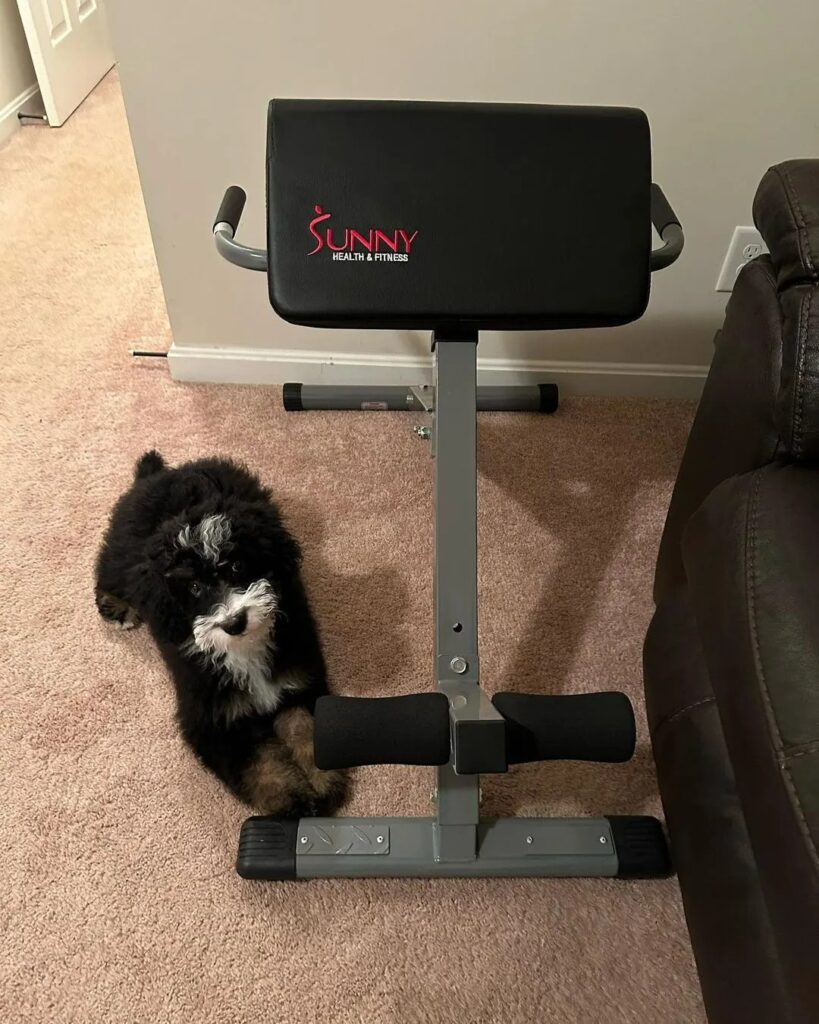
SF-BH6629 45⁰ Hyperextension Roman Chair comes with a one-year structural frame and 180 days of other parts and components manufacturer’s warranty.
FAQ
Is a Roman Chair a Good Workout?
The Roman chair is a good workout that helps build and strengthen several muscle groups, such as the glutes, hamstrings, biceps, core, back, abs, and abdomen. The benefits depend on the type of exercise performed on it. However, misusing it may lead to injuries.
Is a Roman Chair Effective for Abs?
A Roman chair is effective for building and developing abs if exercises targeting the abs are performed with the machine.
What Does the Roman Chair Work Out?
The Roman chair works on the glutes, hamstrings, abdomen, biceps, lower back, chest, and triceps. This depends on the exercise you incorporate with the Roman chair.
Conclusion
Roman chair exercises are great for those looking to strengthen their core and improve their posture, balance and coordination. It also works on several muscles, including glutes, hamstrings, abdominal, biceps, lower back, chest, and triceps.
Examples of Roman chair exercises are side bend, Roman sit-up, back extension, incline push-up, isometric glute hold, preacher bicep curls and hanging dip. However, following the proper guidelines when performing roman chair exercises is recommended to prevent injuries.
Our recommended Roman chair is SF-BH6629 45⁰ Hyperextension Roman Chair. We outlined different features and properties that make it a good value for money.
Have you gotten a Roman chair before? Did you encounter any challenges? Which Roman chair exercises do you prefer? And why? What’s your workout routine like? Share your thoughts in the comments.
Also read:
- Belt Squat
- Seated Calf Raise
- Ultimate Ab Machine Guide
- Seated Calf Raise Alternatives
- Seated vs Standing Calf Raise
- Ultimate Lat Pulldown Machine Guide
- All In One Home Gym Buying Guide
- Best Cardio Machine for Home
References:
- Back extension endurance and strength: the effect of variable-angle roman chair exercise training // Pubmed: https://pubmed.ncbi.nlm.nih.gov/12195070/
- Single-Leg Roman Chair Hold Is More Effective Than the Nordic Hamstring Curl in Improving Hamstring Strength-Endurance in Gaelic Footballers With Previous Hamstring Injury // Pubmed: https://pubmed.ncbi.nlm.nih.gov/29489726/
- Electromyographic activity of the lumbar extensor muscles: effect of angle and hand position during Roman chair exercise // Pubmed: https://pubmed.ncbi.nlm.nih.gov/10414757/
- External oblique // Healthline: https://www.healthline.com/human-body-maps/external-oblique-muscle#1
- Effect of pelvic stabilization and hip position on trunk extensor activity during back extension exercises on a Roman chair // Pubmed: https://pubmed.ncbi.nlm.nih.gov/19229445/
- Photos made by Torokhtiy Media Team; photos by decade3d, Canva; photo by Sebastian Kaulitzki/Science Photo Library, Canva, photo by Geeky Medics Youtube
Why Trust Us?
With over 20 years in Olympic weightlifting, strength training, nutrition coaching, and general fitness our team does its best to provide the audience with ultimate support and meet the needs and requirements of advanced athletes and professional lifters, as well as people who strive to open new opportunities and develop their physical capabilities with us.
By trusting the recommendations of our certified experts in coaching, nutrition, and sports training programming, as well as scientific consultants, and physiotherapists, we provide you with thorough, well-considered, and scientifically proven content. All the information given in the articles concerning workout programming, separate exercises, and athletic performance, in general, is based on verified data.
The product testing process is described in more detail here.
Author: Ihor Shymechko
Pro Olympic Weightlifter, Coach
Best Results: Snatch – 208 kg,
C&J – 240 kg
Ihor has been a professional weightlifter since 1996, boasting over two decades of competition experience. His notable achievements include clinching the European Championship in 2009 and securing a silver medal in the 105kg division at the Senior World Championships in 2011. Ihor represented his country in the 2008, 2012, and 2016 Summer Olympics. After retiring from competitive weightlifting, he transitioned to coaching, leveraging his vast experience to guide athletes who now compete on both national and international stages.



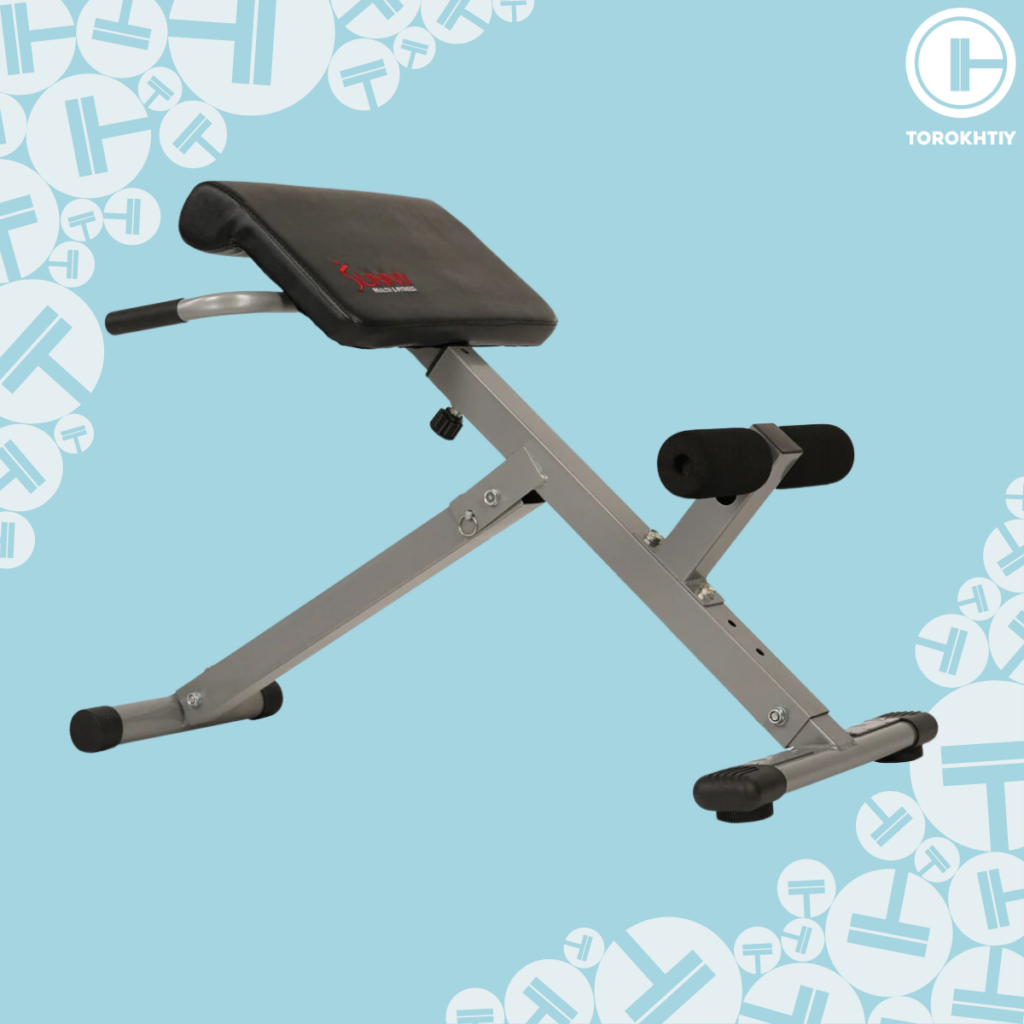
Still have questions after reading our article? Unlock your full potential by engaging with our experts and community! Don’t hesitate — leave a comment below and Ihor Shymechko will provide a personalized answer and insights to help you reach your goals.